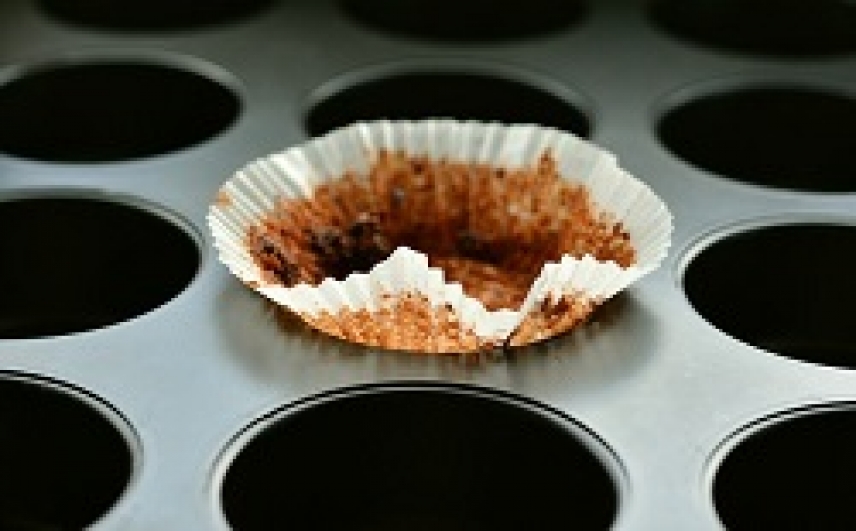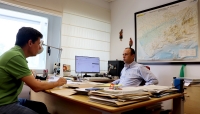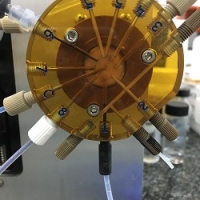Artificial intelligence saves water for water users associations
Escrito por UCC+IA research group at the University of Cordoba has developed a model based on artificial intelligence techniques that can predict how much water each water user will use
Agriculture uses 70% of the water in the world and this appears to be an upward trend regarding water needs. In this context in which the demand in other industry sectors is increasing as well and the effects of climate change influence ever-increasing water shortages, water saving measures have become an unavoidable challenge if we want to maintain the sector and preserve life.
Low-cost formulas in the manufacturing of non-stick food molds
Escrito por UCC+IA University of Córdoba research group designs a new way to manufacture molds allowing small and medium-sized businesses to improve their creativity
There is good news for amateur bakers of cakes, muffins and pastries made in extravagant shapes and small and medium-sized baking businesses. Molds will cease to be a problem if the system designed by a University of Cordoba Belmez Polytechnic School research group progresses. This system manufactures non-stick food molds at a low cost.
Putting oneself in another person’s place is the best antidote against prejudice
Escrito porResearch performed by a team at the School of Education at the University of Cordoba shows an indirect relationship between empathy and the development of prejudices by means of personality and ideological attitudes
This is a subject that is hard to define and harder still to conceptually frame as the subject of a study, due to the overlap with other traits like emotional intelligence or kindness. According to some theories, it is roughly “putting yourself in another person’s shoes.” University of Cordoba Education Professor José Luis Álvarez Castillo defines empathy as “the ability to see things from another person’s perspective from a cognitive and emotional point of view.” That is to say, to imagine and understand other people’s beliefs and opinions and experience their feelings and emotions, understanding and feeling the world through their eyes.
A new model to prevent crime in businesses combines big data and socioeconomic theory
Escrito por UCC+iThe University of Cordoba has designed the basis of a model to prevent criminal behavior at businesses if, in accordance with the possibility provided for in the Penal Code, they wish to not be held legally responsible for perpetrating certain crimes or illegal activity committed by their executives or employees.
When the National High Court indicted Neymar and Barcelona Football Club for signing the player or when the tampering of Volkswagen engines was discovered there was already a regulation in Spanish law that promoted compliance programs, a crime prevention model. So it was clearly set in the Penal Code reform under Organic Law 1/2015; if companies do not have an efficient complicance program, it is likely that they will be liable for certain crimes committed by one of their employees. The implementation and application in these models, called compliances, assumes that the business at least attempts to prevent its employees from committing crimes related to business activity, such as fraud, corruption, environmental crimes, tax evasion and so on, as happened in the Neymar case and seems to have happened in the Volkswagen case.
Water users associations approve remote control watering systems
Escrito por UCC+iResearchers at the University of Cordoba assess the success or failure of installing remote control systems and data measuring in water users associations
From 2005 to 2010, in pursuing plans to modernize irrigation, the first telemetry and remote control watering systems were installed in Spain, in 260 water users associations. With a total area of around a million hectares, these systems began with the aim of facilitating life in the countryside, but have they really achieved their goal?
A new analysis system is able to identify pollutants from cosmetics in seawater
Escrito por UCC+iA University of Cordoba study, in partnership with the University of the Balearic Islands, uses carbon-coated titanium dioxide nanotubes to analyze samples affected by parabens from lotions and shampoos
A University of Cordoba research group has designed a method that detects the presence of pollutants in seawater in a faster and more efficient way and also at very low concentrations. Specifically, the team from Cordoba, in partnership with the University of the Balearic Islands, focused on several substances used as preservatives in soap, lotion and deodorant, which end up in the sea. Concerns about parabens and triclosan have been voiced from different sectors, and the European Commission has been monitoring these substances and limited their use. Parabens and triclosan keep bacteria and fungi from damaging shampoo and toothpaste, but they become a real problem once they get to the sea, where they affect the marine ecosystem. Identifying their presence contributes to the design of measures that correct their effects. This is the idea behind the work on the system designed by the University of Cordoba.







